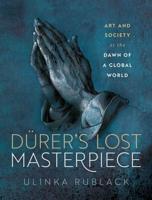Publisher's Synopsis
'What makes some pictures a masterpiece? Who better to explain than our greatest living artist, as he teams up with art critic Martin Gayford to open your eyes to the works of genius he holds dear' --Mail on Sunday
'His sharp and often delightfully slanted take on pictures, explained in clear terms, crisps up perceptions and help readers to look anew.'--Rachel Campbell-Johnston, The Times
'Wonderful ... Apart from the sumptuous avalanche of reproductions, the book consists of paragraphs in which the two proprietors speak alternately. It's a measure of Hockney's vividness of perception that he can always put a cap on Gayford s knowledge ... fabulous'--Clive James, Guardian
'Will keep any intelligent person amused and intrigued ... [Hockney] asks big questions about the nature of picture-making and the relationship between painters and photography in a way that no other contemporary artist seems to do ... enormously good-humoured and entertaining ... On almost every page, there is an interesting provocation'--Andrew Marr, New Statesman
'I won't read a more interesting book all year ... utterly fascinating' --AN Wilson, The Sunday Times
'An eloquent conversational testimony to the vividness of life lived through intelligent looking. You will see Caravaggio and Citizen Kane with fresh eyes' Daily Telegraph
The making of pictures has a history going back perhaps 100,000 years to an African shell used as a paint palette. Two-thirds of it is irrevocably lost, since the earliest images known to us are from about 40,000 years ago. But what a 40,000 years, explored here by David Hockney and Martin Gayford in a brilliantly original book. They privilege no medium, or period, or style, but instead, in 16 chapters, discuss how and why pictures have been made, and insistently link 'art' to human skills and human needs.
Each chapter addresses an important question: What happens when we try to express reality in two dimensions? Why is the 'Mona Lisa' beautiful and why are shadows so rarely found in Chinese, Japanese and Persian painting? Why are optical projections always going to be more beautiful than HD television can ever be? How have the makers of images depicted movement? What makes marks on a flat surface interesting?
Energized by two lifetimes of looking at pictures, combined with a great artist's 70-year experience of experimentation as he makes them, this profoundly moving and enlightening volume will be the art book of the decade.


















